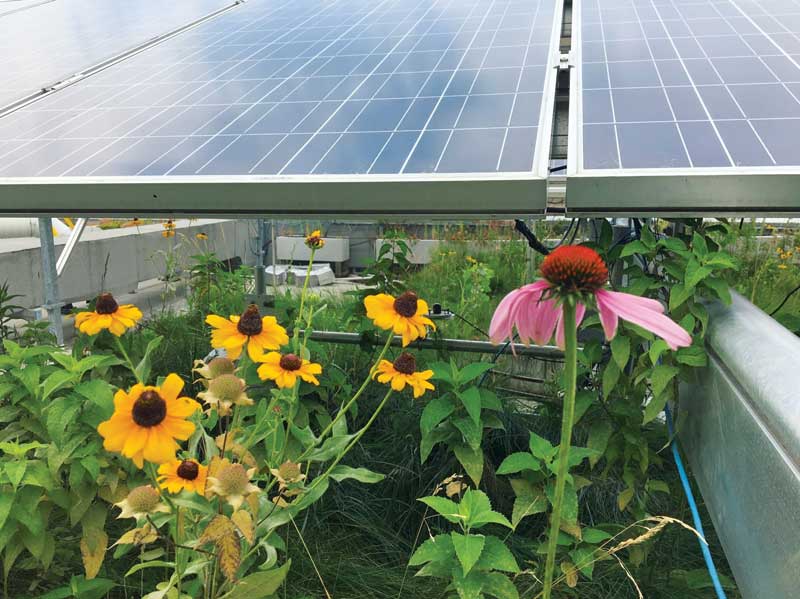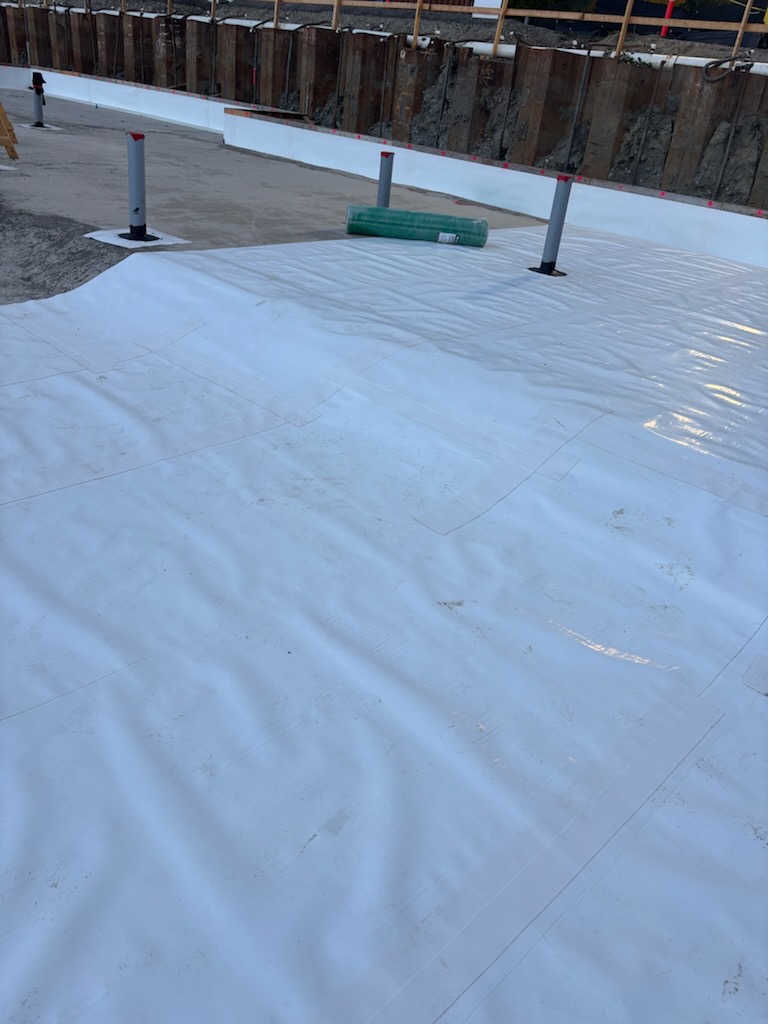Growing green roof research in Toronto

Integrating green technologies
To integrate PV panels with a green roof, additional structural analysis is required during the design phase. PV panels, racking, and associated infrastructure such as invertors must be secured to the roof and capable of resisting wind loads. The building structure must also be sufficient to support the weight of both the vegetated roof and PV structure. Roof loading requirements are easily accommodated in new-build applications, but for retrofit projects, integrated PV/green roof systems are significantly more complex to design.
Data collected from the combined PV/green roof system has allowed researchers to understand better the tradeoff and benefits of integrating multiple green technologies into the same roof space. Small-scale studies have suggested cooling provided by plant evapotranspiration may increase the efficiency of PV panels, extending their lifespan and increasing the rate of energy production of individual panels. Unsurprisingly, shading effects from the PV panels affect plant health and reduce evapotranspiration rates. However, through proper irrigation, shaded green roof plants can continue to thrive.
Side-by-side temperature measurements collected at GRIT Lab have shown the back-surface temperature of PV panels, as well as ambient temperatures, are cooler above a green roof when compared to temperatures above a ‘cool’ roof with a white high-reflective membrane. These promising results suggest with good design, integrated PV/green roof systems have tangible environmental benefits mitigating urban heat island effects and improving the operating conditions for PV arrays.
What’s next?
In 2017, the Daniels Faculty relocated to the Historic One Spadina building. Along with this move will come a new wave of expansion for GRIT Lab in 2018. Design work is underway to create more lab space to examine new research questions and innovated approaches to green roof design. One of the highest-priority questions involves re-examining options for irrigating green roofs.
From a sustainability perspective, it can be counterproductive to rely on treated municipal water for irrigation. Treated water is costly to produce, and treatment and distribution processes require embedded energy and generate carbon emissions. The new lab facility is serviced with two irrigation lines: treated municipal and recycled stormwater. Stormwater that discharges from the base of the building’s green roofs (both in the lab and on surrounding vegetated roof surfaces) is collected in a cistern and pumped back to the lab as irrigation water.
Developing new blends for green roof growing media may be able to reduce or eliminate the need for irrigation. Over the next few years, researchers at GRIT Lab will investigate soil amendments that increase the water retention capabilities of media while maintaining the lightness of existing media mixes.
Conclusion
Cities across North America continue to seek innovative solutions to the challenges of population growth, climate change, and aging infrastructure. Green roofs and infrastructure are important tools —from reducing storm flows to mitigating urban heat island effect and supporting urban wildlife. (For more information on how design/construction professionals can benefit from and contribute to GRIT research, visit grit.daniels.utoronto.ca.) The ongoing work at GRIT Lab provides architects with science-driven design guidance for green roofs that optimizes performance, function, sustainability, constructability, and longevity.
Jennifer Drake is a professional engineer and assistant professor of civil engineering, cross-appointed with the John H. Daniels Faculty of Architecture, Landscape, and Design. She joined the University of Toronto faculty in January 2013. Drake is a researcher with the Green Roof Innovation Testing Laboratory (GRIT Lab) and teaches hydrology and hydraulics, water resources engineering, and stormwater management. Since 2015, she has served as a member of the board of directors for the Toronto and Region Conservation Authority. Drake is an expert in urban flood management and green infrastructure. Her research group specializes in emerging technology, including vegetated roofs, rain gardens, and permeable pavements. Drake can be reached via e-mail at jenn.drake@utoronto.ca.



